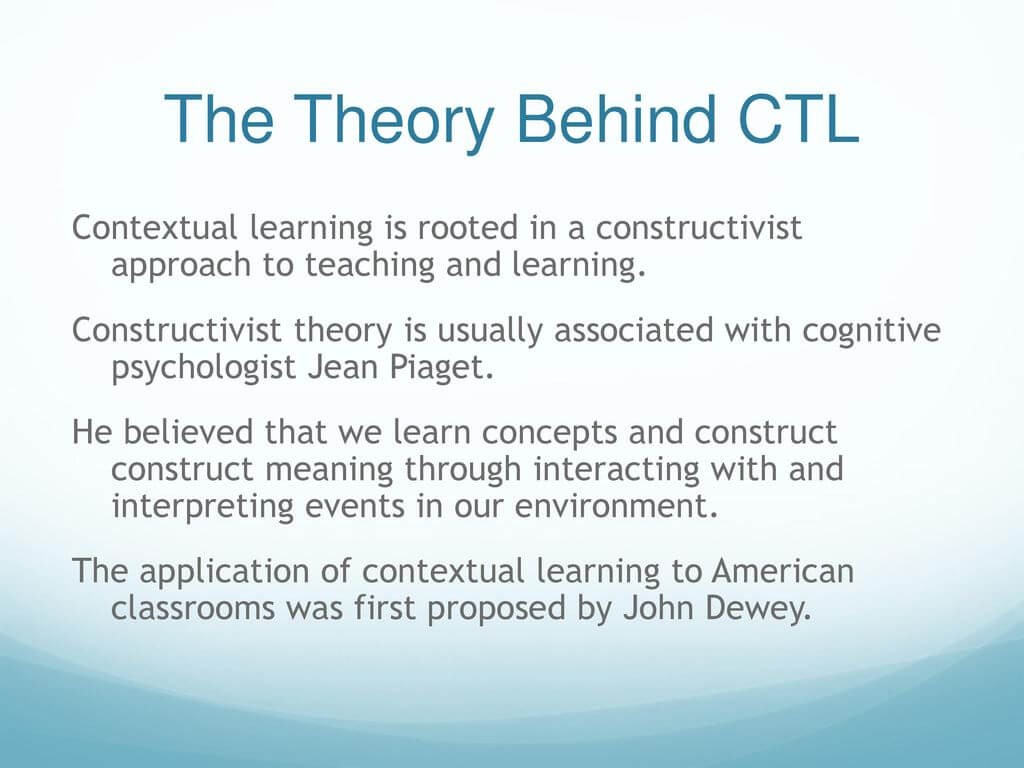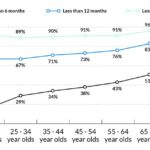Contextual teaching and learning (CTL) is an educational approach that connects classroom learning to real-world situations, making education more meaningful and relevant for students. Based on brain research, CTL recognizes that learning is optimized when students actively construct their understanding within applicable contexts. This approach fosters deeper learning by connecting new information to prior knowledge and experiences.
Key Principles of Contextual Teaching and Learning
CTL is characterized by several core principles:
- Making Meaningful Connections: Integrating new knowledge with students’ existing understanding and real-world experiences.
- Self-Regulated Learning: Encouraging students to take ownership of their learning process, setting goals, and monitoring progress.
- Collaboration: Fostering a supportive learning environment through teamwork and interaction with both peers and teachers.
- Critical and Creative Thinking: Developing students’ abilities to analyze information, solve problems, and generate innovative ideas.
- Nurturing the Individual: Recognizing and addressing the unique needs, learning styles, and abilities of each student.
- Reaching High Standards: Setting ambitious learning goals and providing the support necessary for students to achieve them.
- Authentic Assessment: Evaluating learning through real-world tasks and projects that demonstrate practical application of knowledge and skills.
CTL Theory
The Roots of Contextual Teaching and Learning
CTL is grounded in the theories of prominent educational psychologists:
- Jerome Bruner: Emphasized scaffolding and spiral curriculum, building upon prior knowledge through contextual experiences.
- Jean Piaget: His theory of cognitive development highlights the importance of developmentally appropriate and contextually relevant teaching strategies.
- Lev Vygotsky: Introduced the Zone of Proximal Development (ZPD) and the role of social interaction in learning.
- John Dewey: Advocated for experiential learning, emphasizing the connection between knowledge and real-life experiences.
- Albert Bandura: His social learning theory highlights observational learning and the importance of modeling.
- Howard Gardner: His theory of multiple intelligences encourages diverse teaching methods to cater to various learning styles.
These theorists underscore the importance of making learning relevant and meaningful by connecting it to real-world contexts.
Connecting CTL to Real-World Situations
CTL bridges the gap between abstract concepts and practical application. By grounding learning in real-world examples, case studies, and problems, students develop a deeper understanding of how knowledge is used in everyday life. This connection increases student engagement and motivation, as they can see the relevance of their learning.
CTL Methods
Practical Examples of Contextual Teaching and Learning
CTL can be implemented through various methods:
- Role-Playing: Simulating real-life situations for students to apply knowledge and problem-solving skills.
- Field Trips: Providing firsthand experiences in relevant environments to connect classroom learning with the real world.
- Project-Based Learning: Engaging students in in-depth projects that require applying knowledge and skills in a real-world context.
- Guest Speakers: Bringing in experts to share real-world experiences and career applications of academic subjects.
- Service-Learning: Connecting academic learning with community service projects to address real-world issues.
- Simulation Games: Using interactive games to apply knowledge and skills in a controlled environment.
- Problem-Based Learning: Presenting real-world problems that require critical thinking and problem-solving skills.
Benefits of Contextual Teaching and Learning
CTL offers significant advantages for students:
- Increased Engagement and Motivation: Connecting learning to real-world contexts makes it more relevant and engaging for students.
- Development of Critical Thinking Skills: Real-world problem-solving fosters critical thinking and analytical abilities.
- Deeper Understanding of Academic Concepts: Applying knowledge in practical situations leads to a more profound understanding of concepts.
Implementing CTL: Principles and Practices
CTL implementation involves three key principles:
- Authenticity: Using real-world contexts and tasks to anchor learning experiences.
- Active Learning: Engaging students in hands-on activities, problem-solving, and collaboration.
- Reflective Thinking: Encouraging students to critically analyze their learning experiences and connect them to personal growth.
Contextual teaching differences
Authentic Assessment in CTL
CTL emphasizes authentic assessment, which evaluates student learning through real-world tasks and projects rather than traditional exams. This approach provides a more accurate measure of students’ ability to apply their knowledge and skills in practical situations.
Improving academic lessons with contextual teaching
Providing Feedback in Real-World Contexts
Feedback in CTL should reflect real-world scenarios, offering constructive criticism and focusing on areas for improvement. This helps students develop the skills and knowledge they need to succeed in practical situations.
Self-Regulated Learning in CTL
CTL promotes self-regulated learning, empowering students to take ownership of their education. This involves setting goals, monitoring progress, and reflecting on their learning experiences.
Self-regulated learning
Further Research and Resources
Further exploration of CTL can be found in research on its efficacy in various educational settings, particularly in primary schools. Key areas of study include:
- Deep learning approaches and personal teaching efficacy
- CTL’s impact on conceptual understanding
- The role of context in teaching practices
- CTL strategies in science education
This deeper understanding of contextual teaching and learning highlights its significant impact on student engagement, comprehension, and the ability to apply knowledge in meaningful ways.

